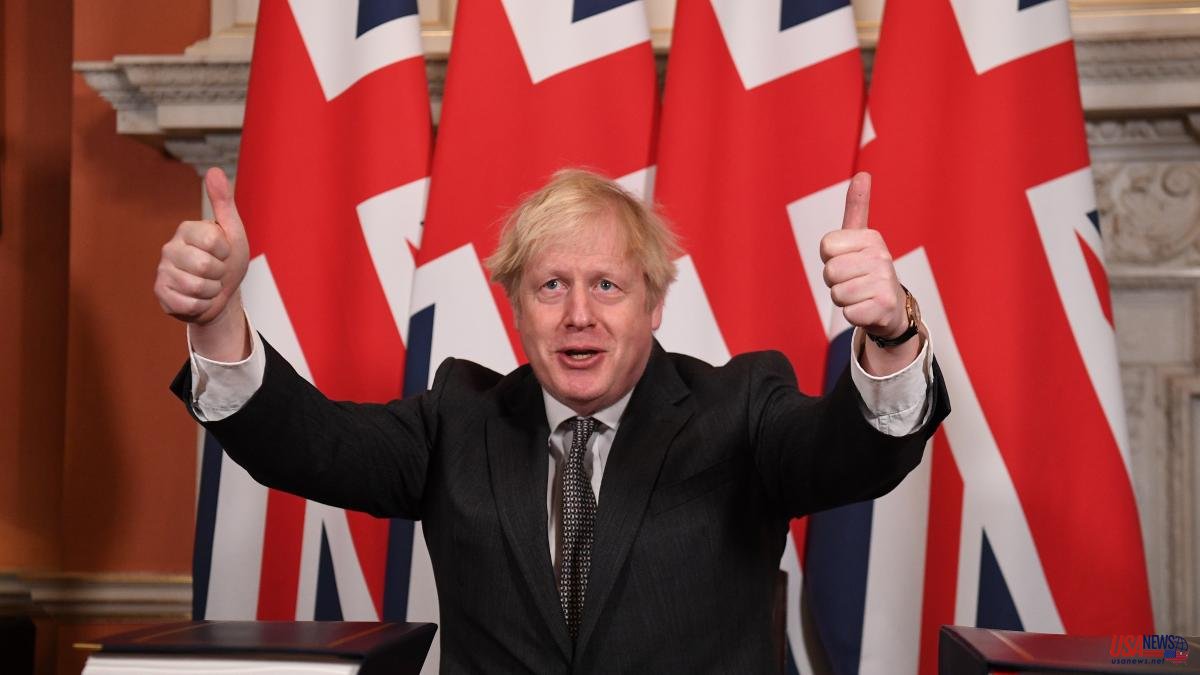The decades after the end of the cold war, the role of nuclear weapons grows again notably. Although their number worldwide is decreasing, it is doing so at a slower rate compared to the last thirty years. Furthermore, the actual number of operationally available nuclear weapons continues to grow.1
Recent events have drawn public attention to nuclear weapons. First, in 2021 satellite images of China's construction of hundreds of new ballistic missile silos were released; a fact that seems to indicate that, after years of maintaining a policy of minimal deterrence, Beijing is placing a new emphasis on its nuclear weapons capabilities.2 This expansion of Chinese nuclear forces, the largest to date, has caused particular concern in the US and its Asian allies. However, also in Europe nuclear weapons have returned to the public arena with Vladimir Putin's war in Ukraine and his nuclear threats.
In addition to those three powers, there are five nuclear-armed states whose arsenals typically receive less attention in the West. While these other nuclear powers (France, UK, Pakistan, India, and Israel) have smaller nuclear arsenals, the role of nuclear weapons is also increasing in their security policies, and some of them are actively expanding their inventories. Despite the similar size of the stockpiles (all between 90 and 290 nuclear weapons), their legal status, nuclear policies and force postures differ significantly.
In the first place, in terms of situation, France and the United Kingdom are, out of the five, the only nuclear powers officially recognized as possessing nuclear weapons by the Non-Proliferation Treaty (NPT).3 This treaty, which entered into force in 1970, aims to prevent the spread of nuclear weapons and promote disarmament. The five officially recognized nuclear weapon states (namely the US, China, Russia, France and the UK, which had already manufactured and detonated a nuclear explosive device before January 1967) are obliged to strive for the complete nuclear disarmament, and non-nuclear weapon states commit not to develop nuclear weapons. However, Pakistan, India and Israel are among the few countries that have not signed or ratified that historic treaty.
In addition to diverging in their legal status, the five nuclear weapon states also diverge in their nuclear policies. While France and the UK are more transparent about policies and positions, India and Pakistan do not give much public information about their nuclear arsenals. The most opaque is Israel, which has never officially confirmed or denied possession of such weapons.
Finally, the structure of their nuclear arsenals also differs, reflecting the different strategic and geographical location of the five. The UK is the only nuclear-armed state in possession of a single type of nuclear weapon. You can only launch nukes from the sea. Submarine-launched ballistic missiles (SLBMs) are also the backbone of deterrence for France, although the country also operates air-launched cruise missiles. Pakistan, for its part, is actively developing a triad with an air, land, and soon maritime component; while India already operates a fledgling nuclear triad. Israel is also believed to have a triad and to be able to deliver its nuclear weapons via land-based ballistic missiles, aircraft, and probably sea-based cruise missiles.
The worldwide growth of the role of nuclear weapons is underlined by the nuclear-weapon state that was perhaps least expected to do so: the United Kingdom. In 2021, London made headlines with the publication of its Integrated Review of Security, Defence, Development and Foreign Policy, stating that the UK would raise the ceiling on its nuclear weapons stockpile.4 The country has the smallest inventory of nuclear weapons of the states with official nuclear weapons, with an arsenal of some 225 nuclear warheads, of which 120 operationally available. Moreover, during the last decade he has not stopped declaring his will to gradually reduce the number of nuclear weapons. However, in 2021, London took a sudden turn on that policy by announcing that it would raise the cap to 260, albeit declaring that this was not an explicit target, but rather a ceiling.5 Furthermore, it also reversed its traditional transparency policy and stopped providing public figures on the inventory of nuclear weapons. Although there are undoubtedly different reasons for this change in policy that are not publicly known, Secretary of Defense Ben Wallace pointed in particular to Russia's ballistic missile defense capabilities. Russia is rated in the Integrated Review as “the greatest threat to the UK” and, according to Wallace, has invested heavily in its defense against ballistic missiles.6 Therefore, the country has raised its nuclear weapons ceiling to ensure that deterrence of the United Kingdom remains credible and effective.
London, whose nuclear weapons history dates back to the early 1950s when it first tested a nuclear weapon, maintains a credible minimum deterrence policy. That means that it does not possess more nuclear weapons than is considered necessary to deter potential adversaries.7 However, like most nuclear powers, it follows a policy of strategic ambiguity by not specifying when and how it would use nuclear weapons. It only declares that it will not use them against non-nuclear weapon states that are signatories to the NPT and comply with the obligations of the treaty. Furthermore, the UK only operates one nuclear platform with a fleet of four ballistic missile submarines (SSBNs). One of these submarines is deployed at sea at all times (called a continuous sea deterrence posture, CASD), while the others remain in port or under review.8
The London capacity increase is part of a larger UK nuclear modernization programme. Although this European nuclear power is part of the NPT and claims to remain committed to the ultimate goal of a world without nuclear weapons, it believes that it will maintain its nuclear weapons potential as long as the security situation makes it necessary.9 To do so, it is going to replace its aging fleet of Vanguard-class SSBNs for new Dreadnought-class submarines and is also undergoing upgrades to nuclear warheads. In addition, it participates in a missile expansion program developed by the US Navy.10
As a founding member of NATO, the United Kingdom has dedicated its nuclear deterrent to the defense of the Alliance for sixty years.11 In this it contrasts with France, the other European nuclear power. Although it is also a founding member of NATO and also cooperates with the United Kingdom on nuclear issues, France does not participate in the bodies and the elaboration of the Atlantic nuclear policy. Specifically, it does not participate in the Nuclear Planning Group (NPG), which is the main forum for discussing nuclear issues in NATO. The main reason is historical, as France has for decades associated the possession of nuclear weapons with national independence. Despite this policy, France's nuclear potential contributes to the Alliance's overall deterrent effect.12 This was recently made clear by French Foreign Minister Jean-Yves Le Drian in his response to Putin's nuclear threats in the US war. Ukraine, when he pointed out that it should understand that NATO is also a nuclear alliance.13 In addition, Russia's war against Ukraine and its nuclear threats have caused France to increase its SSBN presence, a measure that it had not taken since the end of the cold war.14 On the other hand, Macron has underlined France's commitment to strengthening the nuclear culture within the Alliance.15 However, Macron wants to see above all a greater role for French nuclear deterrence in defense European collective as part of his desire for European sovereignty.16 In 2020 he proposed to start a dialogue on the subject. Despite the desire for more cooperation, Macron stressed that this would not affect France's independent decision-making on nuclear policy issues.
France carried out its first nuclear weapons test in 1960 and became the fourth largest nuclear power after the US, the USSR and the UK. Like the latter country, France maintains a position of "strict sufficiency", that is, it only has the nuclear weapons that it considers necessary to deter the attack of possible adversaries. France also notes that its nuclear arsenal is defensive and will only be used in extreme circumstances to defend itself. In practice, this means that France has an arsenal of some 300 warheads, almost all of which are operational. Unlike the UK, that number of nuclear weapons has been stable over the last ten years and can be launched not only from submarines but also from aircraft.
While the number of warheads has not changed much, France is also modernizing the nuclear arsenal by replacing submarines and aircraft, and by upgrading missiles and deploying new warheads. Thus, like the other nuclear-weapon states under the NPT, France has committed to long-term disarmament, but is currently not actively taking steps to achieve that goal.
In the West, nuclear weapons are often associated with the cold war and the security architecture in Europe. But atomic weapons also play a role in other regions. In particular, the deterrent relationship between India and Pakistan is often overlooked in the West. In fact, the nuclear stability between the two powers is one of the most fragile. Tensions between the two remain high, and several crises have occurred in recent years; for example, the Balakot crisis in 2019, which reached (but thankfully did not cross) the nuclear threshold. The fragility of stability in crisis situations has recently been highlighted by the accidental firing of an Indian missile at Pakistan, triggering bitter comments and destabilizing reactions from both countries.17
India and Pakistan are two of the youngest nuclear weapons states and neither of them have signed or ratified the NPT. India first tested an explosive nuclear device in 1974. That prompted Pakistan to speed up its own secret nuclear program, but it wasn't until 1998 that the country conducted its first nuclear test. Currently, the nuclear arsenals of the two countries are of similar size, with India possessing some 150 nuclear warheads and Pakistan some 165, although both countries have the potential to further increase their arsenals. Their contentious relationship is increasingly exacerbated by a third nuclear power: China. India's perception of China as a threat has been reinforced in recent years, influencing its policy and driving a nuclear modernization program. This, in turn, has implications for Pakistan and the credibility of its nuclear deterrent, adding another layer of complexity to regional stability.18
India can launch nuclear weapons from the air, land and sea, thus operating a fledgling nuclear triad. Initially, India's nuclear capability was exclusively air-based, but in recent years it has developed a diverse arsenal of land-based and sea-based ballistic missiles. Currently, that nuclear power operates with short, medium and intermediate range missiles, and is developing others with a longer range. That allows it to hit targets not only in Pakistan, but also in China, including Beijing. Officially, India declares that it will not use nuclear weapons in the first place and has committed to a policy of minimal deterrence. But statements by Indian officials over the past two years and the modernization program cast doubt on such a policy.19 In particular, the country appears to be increasing the readiness of its nuclear arsenal by keeping some of its missile-attached warheads in special depots. , which would allow it to launch nuclear weapons much faster than before and make it harder for its adversaries to detect that it is approaching the nuclear threshold in a crisis. However, this is not the only change in position with repercussions on his opponents. According to various analysts, India is also developing MIRV technology, that is, the technology that will allow it to deploy multiple warheads on each missile. If successful, it would give him the ability to hit more targets with fewer of his missiles. These technological advances, which also affect its nuclear policy, will aggravate regional security, especially by undermining stability in a crisis situation.20
Pakistan is also immersed in a program to modernize and expand its nuclear forces, with the consequent increase in the risk of escalation in the region. The country seeks a "full-spectrum deterrent posture." That means its nuclear potential consists of various launch capabilities for different ranges, as well as warheads with different yields. Particular emphasis is placed on non-strategic nuclear weapons (ie weapons systems with lower yields and shorter ranges), reflecting their strained relationship with neighboring India. According to Pakistani officials, such a stance is intended to counter India's ability to launch large-scale conventional attacks against Pakistan. It is a deterrence posture that has generated, also in the West, fears that Pakistan may seek a lower threshold to use nuclear weapons. Pakistan has reacted to these fears by insisting on the defensive nature of its nuclear potential. According to Pakistani officials, their country also follows a credible minimum deterrence policy, but there is much ambiguity surrounding its nuclear use policy.21 For now, Pakistan can only launch nuclear weapons from the air and from the ground. However, the country is not only actively expanding its air and ground nuclear capabilities (including the development of MIRV technology), but is also developing a sea-launched cruise missile. When that effort succeeds, the cruise missile will provide Pakistan with a maritime platform and thus a full nuclear triad.
Last but not least, there is Israel, a singular case when it comes to nuclear policy. Israel follows a policy of total nuclear opacity that it calls animut:22 it neither confirms nor denies the possession of nuclear weapons. For their part, Israeli officials continue to maintain that Israel will not be the first country to introduce nuclear weapons in the Middle East. But the Israeli definition of "introducing nuclear weapons" is not very clear, as it has several caveats. Thus, what Israel seems to mean is that it is testing, officially declaring to possess, or even using nuclear weapons.
Despite the ambiguity, its nuclear weapons program is believed to date back to the 1950s.23 Due to Israel's high level of secrecy and deception, it took the US years to discover the true purpose of the Israeli initiative; and when it did, the US government did not actively try to prevent the development of a nuclear weapons capability, undermining its own credibility on nuclear non-proliferation. Furthermore, in the early years, Israel received technological components from France, Norway and other Western countries for its covert program. Although it is believed to have carried out a nuclear test in 1979, probably with the help of South Africa, it is difficult to assess the sophistication of its nuclear weapons programme.24 Only very rough estimates exist of the number of nuclear weapons Israel possesses. The prestigious Federation of American Scientists concludes that it probably has about 90 nuclear warheads, but that it has enough plutonium to increase its arsenal of nuclear weapons. In addition, the country is likely to be able to deliver nuclear weapons via land-based ballistic missiles, aircraft, and possibly sea-based cruise missiles as well.25
In short, although nuclear weapons are often perceived as relics of the cold war, even thirty years after the fall of the Wall they continue to play a vital role throughout the world, and not just in the US, Russia and China.
Both the UK and France show that the role of nuclear weapons in Europe is growing rather than diminishing. Despite increased public pressure on European countries to disarm, the situation is unlikely to change in the near future. Russia's war in Ukraine and its nuclear threats against NATO have drawn renewed attention to nuclear risks in Europe. By exploiting his nuclear potential and using explicit nuclear threats to prevent other powers from interfering in his conventional war in Ukraine, Putin is challenging not only the European security architecture but also the nuclear order. increased role of nuclear deterrence in NATO policies.
And also in the Middle East and South Asia nuclear weapons continue to play an important role in regional security. Given the continued hostile relations between Israel and Iran, as well as the growing tensions between Pakistan and India and also between India and China, there are no signs that the situation will change soon.
Lydia Wachs is a researcher at the German Institute for International and Security Affairs (SWP), Berlin.













